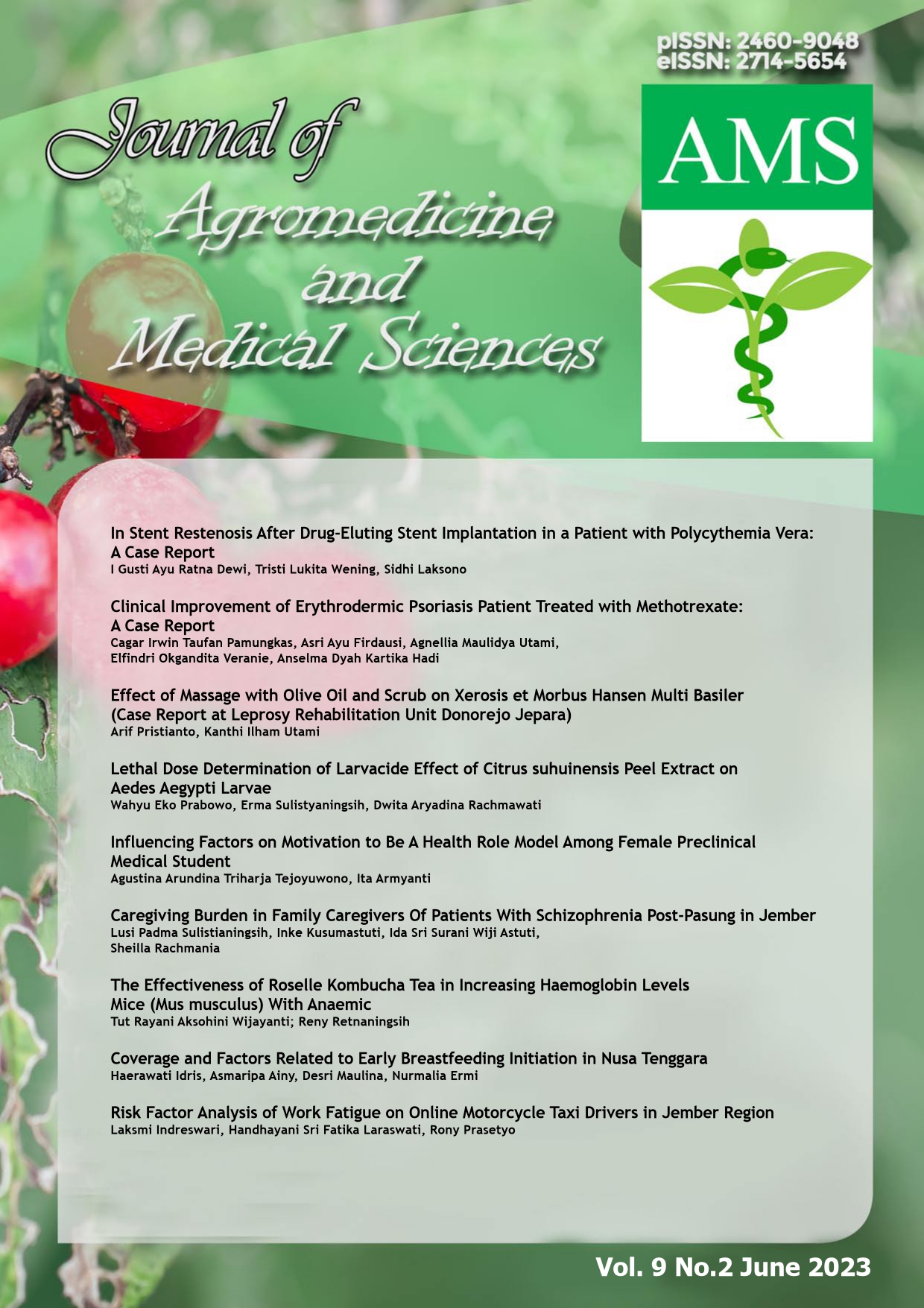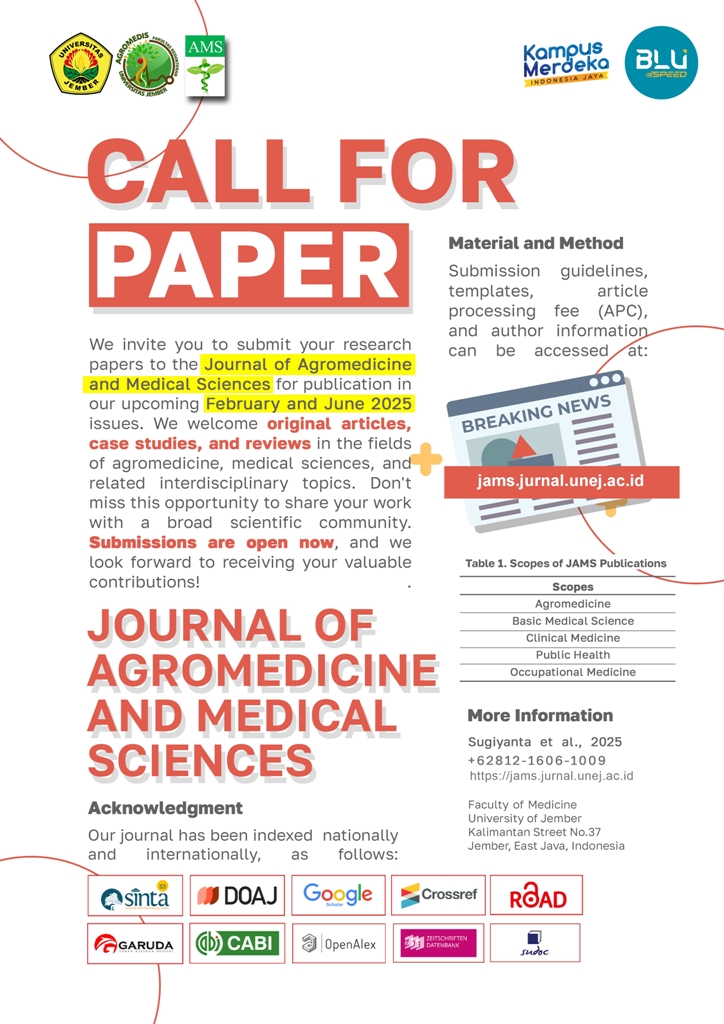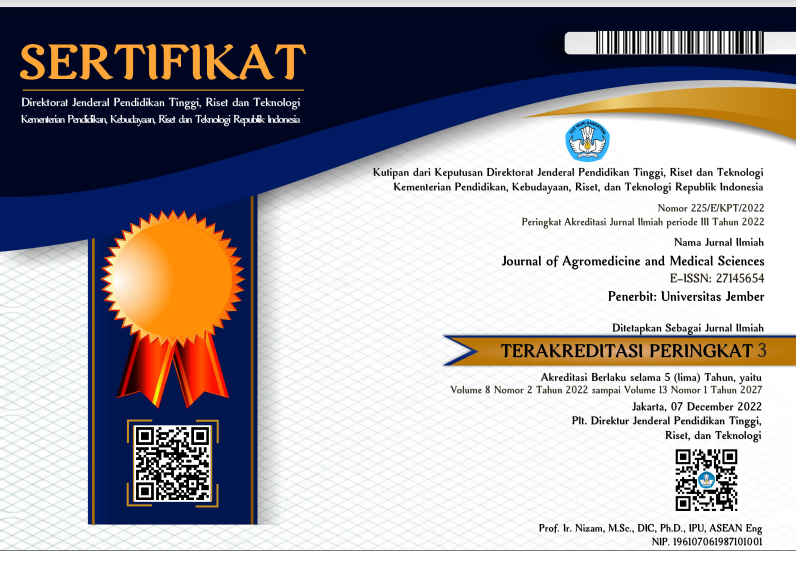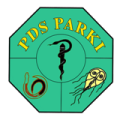Effect of Massage with Olive Oil and Scrub on Xerosis et Morbus Hansen Multi Basiler
(Case Report at Leprosy Rehabilitation Unit Donorejo Jepara)
DOI:
https://doi.org/10.19184/ams.v9i2.38375Abstract
Morbus Hansen or leprosy is a chronic granulomatous infection caused by Mycobacterium leprae. This disease attacks the peripheral nerves and other organs or systems in the body. M. leprae attacks the stratum corneum so that it makes the skin rough, scaly and cracked or what is called xerosis. The appearance of xerosis is due to mechanisms that contribute to decreased hydration of the stratum corneum and defects in sweat gland function. Prevention of damage to the integrity of the skin (xerosis) in leprosy patients can use olive oil, vaseline, coconut oil, and olive oil. This case report was conducted to determine the effect of massage with olive oil and scrub in overcoming skin problems in leprosy subjects. Providing a physiotherapy program at the Donorejo Leprosy Rehabilitation Unit in Jepara, using physiotherapy modalities in the form of massage with olive oil and scrubs. After therapy was carried out on the subject by giving massage with olive oil and scrub, there was a significant decrease in the ODSS scale value from an initial value of two to a value of one. The results showed that massage with olive oil and scrub was effective in improving the skin of leprosy patients which could be used as an alternative intervention in skin care for leprosy sufferers to prevent further defects.























